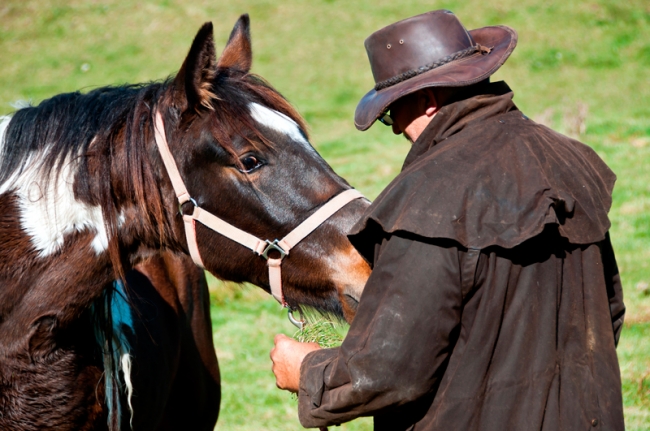Elitox® in horses

I am an owner of 100 miniature horses in Australia. For the last few summers we have experienced a select few horses that exhibit stagger like symptoms. With a dominance of Perennial Ryegrass in our pasture and a history within the area, these horses were diagnosed with Perennial Ryegrass Toxicosis (PRGT), otherwise known as Ryegrass Staggers.
One horse in particular -‘Elegance’- displayed severe clinical symptoms. There was no improvement in her condition after several consultations with vets, chiropractors and alternative practitioners as well as trials with different mycotoxin binders, so putting her down became a serious consideration. In a last effort to save Elegance, it was recommended we try feeding Elitox® in a hard feed mix. Within 24 hours of feeding Elitox®, Elegance began to show remarkable improvements and had stopped swaying from side to side. After 48 hours daily fall events were no longer a problem. Continual improvements were observed over the following days as she returned to normal eating patterns and social interaction with other horses. Everyone who had seen her in such poor condition was amazed at the turn around!
Source: Feedworks Australia
Other Articles
-
+ more03/10/2015
I am a pig farmer in Queensland and I use Elitox® routinely in sow and weaning diets to help manage the challenges that mycotoxins can cause.
It is also used on an “as needs” basis in further rations if raw materials are deemed to present a higher risk. Use in sows is to optimize both fertility of sows and liveability of young pigs. We have been previously contended with lesions and discoloration of ears, feet and tails in weaning pigs. We attributed this to mycotoxins.
-
+ more03/10/2015
I am a dairy producer in the Americas, with about 2000 cows. My feed company had decided to buy corn of a new supplier and it contained severe toxin loads.
My cows were on 6 g/head/day Elitox® at the time. But they started to show T-2 type signs with bloody diarrhea throughout the herd and several cows died after being removed from the herd to the sick group.
-
+ more02/12/2015
Koppenol, A.1; Machado Júnior, P.C.2,3, Dhaouadi, S.1, Caron, L.F.3,4
1Impextraco nv, Wiekevorstsesteenweg 38, Heist-op-den-berg, Belgium;
2Impextraco Latin America, Rua Eng. Sady Souza 650, Curitiba, Brazil;
3Department of Basic Pathology, Universidade Federal do Paraná, Curitiba, Brazil;
4Imunova Análises Biològicas LTDA, Curitiba, Brazil. -
+ more01/14/2015
Van Hamme, V.1; Machado Junior, P.C.2; Eto A.2; Costa L.B.3
1Impextraco nv, Wiekevorstsesteenweg 38, Heist-op-den-berg, Belgium;
2Impextraco Latin America, Rua Eng. Sady Souza, 650, PR 81290-020 Curitiba, Brazil;
3Pontifícia Universidade Católica do Paraná (PUCPR), PR 81290-020 Curitiba, Brazil -
+ more01/10/2015
Van Hamme, V.1; Machado Júnior, P.C.2; Dhaouadi, S.1, Caron, L.F.3
1Impextraco nv, Wiekevorstsesteenweg 38, Heist-Op-Den-Berg, Belgium;
2Impextraco Latin America, Rua Eng. Sady Souza, 650, PR 81290-020 Curitiba, Brazil;
3Department of Basic Pathology, Universidade Federal do Paraná. Setor de Ciências Biológicas, Centro Politécnico,
P.O. Box 19031, PR 81531-990 Curitiba, Brazil

